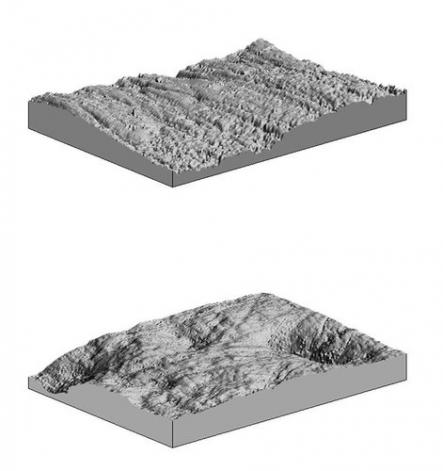Clues About Early Diets Found in Fossilized Teeth
Sindyan Bhanoo
Source - http://www.nytimes.com/2011/10/18/science/18diet.html?_r=2
By studying the pits and scratches on fossilized teeth and analyzing the carbon isotopes on enamel, researchers have discovered new information about the diets of early hominids.

Researchers have done microscopic analysis of wear in fossilized teeth of early hominids. Science/AAAS
“The new data suggests our simple story, of harder and harder diets over time, is not accurate,” said Peter Ungar, a paleoanthropologist at the University of Arkansas, whose lab does microscopic analysis of dental wear.
The genus Australopithecus, which lived two million to four million years ago, shows a greater variation in diet over geographic region than over time, he said.
The carbon isotope analysis was done by his colleague and co-author Matt Sponheimer, a paleoanthropologist at the University of Colorado.
Australopithecus groups in eastern Africa lived in the open savannah and fed on tough foods, like grasses. In South Africa, the data shows that Australopithecus groups may have had to fall back on hard, brittle foods like nuts, roots and seeds.
There were similar differences in diet between groups of Paranthropus, a genus that lived about 2.7 million years ago, Dr. Ungar said. Paranthropus had strong jaws and teeth, and scientists previously believed that it relied heavily on hard, brittle foods.
But “shapes of the teeth alone tell you what the animal is capable of eating, not what they eat on a day-to-day basis,” he said.
Microwear and carbon analysis provides more detailed information on the ecology of hominids — how they lived based on what was immediately available to them.